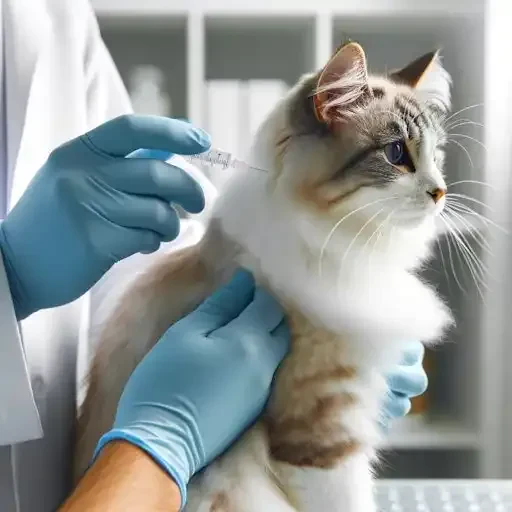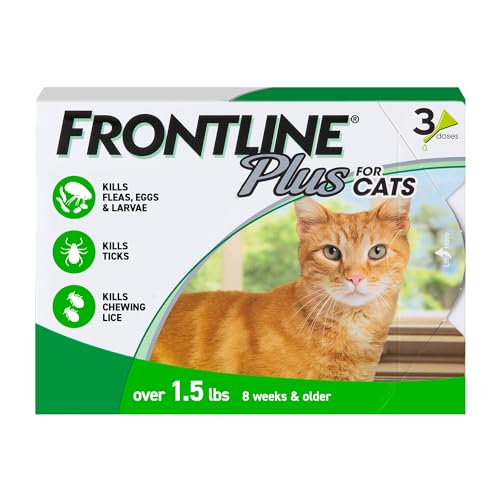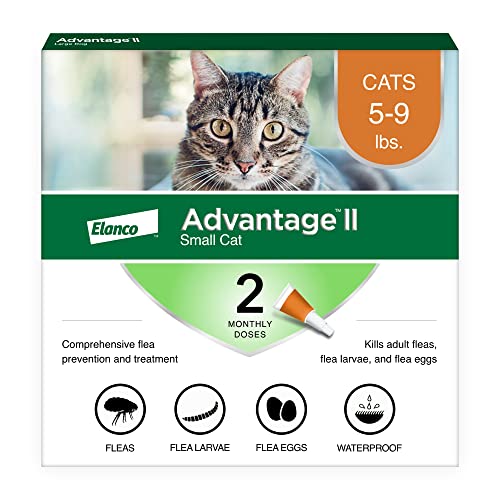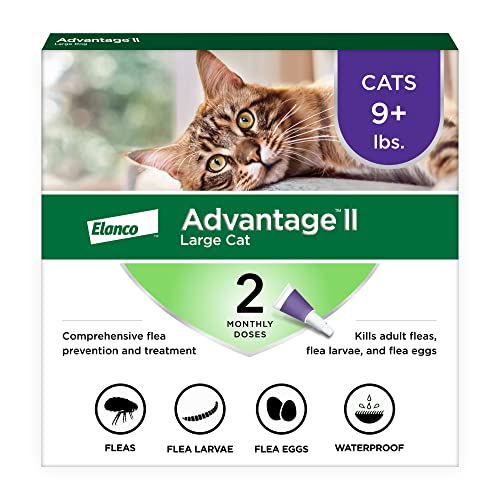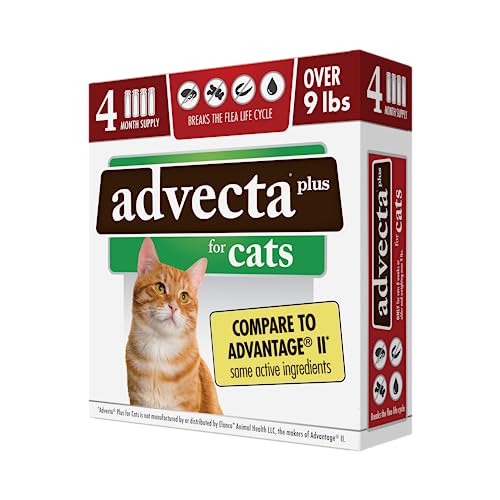Think your indoor cat is safe from fleas and ticks? Many cat owners breathe a sigh of relief, believing that because their feline companion rarely ventures beyond the living room, they are shielded from the creepy crawlies of the outside world. This is a comforting thought, but unfortunately, it's a dangerous misconception. Fleas and ticks are not just a concern for outdoor adventurers; they are a widespread problem affecting cats of all lifestyles, even those who spend their entire lives indoors. And while the image of a cat scratching might seem like a minor annoyance, the truth is that flea and tick infestations are far from being mere cosmetic issues. They carry with them a host of serious health implications, ranging from skin allergies and anemia to potentially life-threatening diseases. These pests are not geographically limited either. Fleas and ticks are incredibly resilient and adaptable, found in diverse environments across the globe, and capable of thriving in urban apartments as easily as rural landscapes. Therefore, understanding the pervasive nature of these parasites is the first step towards recognizing the vital importance of regular, year-round prevention for every cat, regardless of their perceived risk. This article aims to shatter the myth of indoor cat immunity and illuminate why proactive flea and tick prevention is not just a recommendation, but a fundamental aspect of responsible cat ownership. We will delve into the hidden dangers these tiny pests pose, unravel the intricacies of effective prevention methods, and guide you in making informed choices to safeguard your feline friend's health and well-being, ensuring they live a life free from the relentless torment and serious health risks associated with flea and tick infestations.
To truly grasp the significance of flea and tick prevention, it’s crucial to understand the nature of the threat they pose. Fleas and ticks are not simply irritating insects; they are parasites with complex life cycles and the potential to cause significant harm to your cat. Let's begin with fleas, those tiny, wingless insects that can make your cat’s life, and yours, a living misery. Fleas are masters of survival and reproduction. Their life cycle, while seemingly simple – egg, larvae, pupae, and adult – is remarkably efficient in perpetuating infestations. Adult fleas, the stage we most commonly see, are only a small fraction of the total flea population in an infestation. The majority exist as eggs, larvae, and pupae, often hidden away in carpets, cracks in flooring, and upholstery, making eradication a persistent challenge. You might be thinking, "But my cat never goes outside, how could they possibly get fleas?" This is the common misconception. Cats, even strictly indoor cats, can acquire fleas through various seemingly innocuous pathways. We, ourselves, can inadvertently become flea ferries, carrying adult fleas or flea eggs indoors on our shoes, clothing, or even on other pets, like dogs, who do venture outdoors. Rodents, such as mice or rats, can also introduce fleas into the home, acting as unwitting transport vehicles. And while you may diligently keep your home clean, flea pupae, encased in silken cocoons, are remarkably resistant to many household cleaning efforts, patiently waiting for the right conditions to hatch and unleash the next generation of fleas. Recognizing the signs of a flea infestation in cats is essential for prompt action. Excessive scratching, biting, and licking are the most common and obvious indicators. You might notice your cat focusing their grooming efforts intensely, particularly around the base of their tail, back legs, and belly. Hair loss, especially in these areas, can develop due to constant scratching and irritation. "Flea dirt," those tell-tale black specks resembling pepper flakes in your cat's fur, are actually flea feces and a clear sign of infestation. And while seeing adult fleas directly can be challenging due to their speed and agility, especially in dense cat fur, you might occasionally spot them, tiny dark specks darting through their coat.
Ticks, while often larger and less agile than fleas, present a different but equally serious set of dangers. Like fleas, ticks also have a complex life cycle, progressing through larval, nymph, and adult stages, each requiring a blood meal to molt and develop. Unlike fleas, ticks often attach to their host for extended periods, sometimes days, feeding slowly and stealthily. How do cats encounter ticks? Exposure to wooded areas and tall grass are the most commonly cited risk factors. However, ticks are increasingly prevalent even in urban environments, particularly in areas with wildlife populations like deer or rodents. Cats who spend time in gardens, parks, or even just brushy areas near their homes can easily pick up ticks. Ticks are opportunistic parasites, patiently waiting on vegetation to latch onto a passing host, be it a deer, a dog, or your curious cat. Recognizing tick infestations can be slightly different from flea detection. Visible ticks are the most obvious sign. Ticks are often found attached to a cat's skin, particularly around the head, neck, ears, and between toes, areas where fur is thinner and attachment is easier. You might feel a small bump while petting your cat and upon closer inspection, discover it’s a tick. After a tick detaches, you might sometimes notice a small bump or localized skin irritation at the attachment site.
It's important to understand that flea and tick prevalence is not uniform; geographic distribution and seasonality play a role, but not always in the way we might assume. Fleas thrive in warm and humid climates, which unfortunately means in many regions, they can be a year-round problem outdoors. However, even in colder climates, fleas can readily infest indoor environments regardless of the outdoor temperature. Centrally heated homes provide the perfect warm and humid microclimate for fleas to flourish year-round, making seasonal prevention alone insufficient. Ticks exhibit more regional variations in prevalence, with certain areas being known as "tick hotspots." Tick activity also has peak seasons, typically spring, summer, and fall, when temperatures are conducive to their life cycle. However, tick activity is not strictly limited to these seasons. In milder winters, or during unseasonably warm spells, ticks can become active even outside of their traditional peak periods. This nuanced understanding of flea and tick distribution and activity highlights a crucial point: year-round prevention is not an overreaction, it is often the most prudent and effective approach. Debunking the myth of seasonal prevention is vital. Relying solely on prevention during perceived "tick season" or "flea season" leaves your cat vulnerable during the shoulder seasons and, especially for fleas, throughout the entire year if they are brought indoors. Consistent, year-round prevention provides a continuous shield, protecting your cat from these parasites regardless of the time of year or their lifestyle.
The seemingly minor nuisance of fleas and ticks can quickly escalate into significant health problems for your cat. Understanding these real dangers underscores the critical need for preventative measures. Let's first examine the health problems directly related to flea infestations. Flea Allergy Dermatitis, or FAD, is perhaps the most common flea-related ailment in cats. FAD is not just a reaction to flea bites themselves, but an allergic reaction to flea saliva. Even a single flea bite can trigger an intense and widespread allergic response in a sensitive cat. The hallmark symptom is relentless itching, often accompanied by skin inflammation, redness, and the development of small, itchy bumps or pustules, particularly around the rump, tail base, and inner thighs. The incessant scratching, licking, and biting can lead to self-trauma, causing hair loss, skin damage, and the development of secondary skin infections, commonly known as "hot spots" or pyotraumatic dermatitis, which are localized areas of intensely inflamed and infected skin.
In severe flea infestations, especially in vulnerable cats like kittens or those already debilitated by other illnesses, anemia can become a serious concern. Fleas are blood-sucking parasites, and a heavy flea burden can lead to significant blood loss over time. Anemia, a deficiency in red blood cells, can manifest as lethargy, pale gums, and weakness, and in severe cases, can be life-threatening, requiring veterinary intervention, including blood transfusions. Tapeworms are another common and often overlooked consequence of flea infestations. Cats become infected with tapeworms by ingesting fleas during grooming. Fleas can carry tapeworm larvae, and when a cat grooms themselves and accidentally swallows an infected flea, the tapeworm larvae mature into adult tapeworms within the cat's intestines. Tapeworms are intestinal parasites that can cause weight loss, digestive upset, and anal irritation. Detecting tapeworms often involves seeing small, rice-like segments, which are tapeworm egg packets, in your cat's feces or around their anus. Treating tapeworms requires deworming medication, typically prescribed by a veterinarian. Bartonellosis, also known as Cat Scratch Disease, is a bacterial infection that can be transmitted to cats, and potentially to humans, primarily through flea bites, although cat scratches can also play a role. Cats infected with Bartonella bacteria may show subtle or no symptoms, making them carriers without outward signs of illness. However, in humans, Cat Scratch Disease can cause swollen lymph nodes, fever, fatigue, and in rare cases, more serious complications. While direct cat-to-human transmission of Bartonellosis is not always efficient, fleas act as the primary vector, highlighting another way flea control indirectly protects human health.
Ticks, while not causing the same widespread skin irritation as fleas, carry their own set of significant health risks, primarily through the transmission of tick-borne diseases. Lyme disease, while more commonly associated with dogs, can also affect cats, although it is considered less frequent. Lyme disease is caused by bacteria transmitted through the bite of infected blacklegged ticks. Symptoms in cats can be subtle and non-specific, potentially including lethargy, fever, joint pain, and lameness. Diagnosis can be challenging, and treatment typically involves antibiotics. Anaplasmosis and Ehrlichiosis are other tick-borne bacterial diseases that can affect cats. Similar to Lyme disease, symptoms can be vague and include fever, lethargy, loss of appetite, and joint pain. Diagnosis and treatment are also similar to Lyme disease, requiring veterinary intervention and antibiotics. Cytauxzoonosis, often referred to as "Bobcat Fever," is a particularly severe and often fatal tick-borne protozoal disease affecting cats. It is more prevalent in certain geographic regions, especially the Southern United States, where the bobcat tick, the primary vector, is more common. Cytauxzoonosis is a rapidly progressing and devastating illness, causing fever, lethargy, jaundice, anemia, and often leading to death despite aggressive treatment. Tick paralysis is another serious but less common tick-borne threat. Certain species of ticks produce toxins in their saliva that, when injected during a bite, can cause progressive paralysis in cats. Symptoms start with weakness and incoordination, and can rapidly progress to complete paralysis and respiratory failure, becoming life-threatening if untreated. Removal of the tick is crucial, and supportive veterinary care is often necessary.
Beyond the specific diseases directly transmitted by fleas and ticks, infestations can lead to a cascade of secondary infections and complications. Skin infections, both bacterial and fungal, are frequent consequences of the skin damage caused by scratching and biting due to flea and tick irritation. Broken skin becomes vulnerable to bacterial and fungal overgrowth, leading to secondary infections that require veterinary treatment with antibiotics or antifungals. Hot spots, or pyotraumatic dermatitis, are localized areas of intensely inflamed and infected skin, often triggered by excessive licking and scratching in response to flea or tick irritation. These painful lesions can rapidly worsen and require veterinary care, including cleaning, topical medications, and sometimes oral antibiotics or steroids to control inflammation and infection. Chronic flea and tick infestations can also have a broader impact on a cat's overall health by compromising their immune system. The constant irritation, stress, and potential blood loss associated with chronic infestations can weaken the immune system, making cats more susceptible to other illnesses and infections.
Finally, it's important to recognize that fleas and ticks are not just a threat to your cat's health; they can also pose risks to humans and the household. Flea bites on humans, while not transmitting the same diseases as they do to cats, are undeniably annoying and can cause intense itching and uncomfortable welts. Some individuals may even develop allergic reactions to flea bites. Ticks can also detach from pets indoors and attach to humans, posing a direct risk of tick-borne disease transmission to human family members. While cats are not primary vectors for transmitting tick-borne diseases directly to humans, the presence of ticks on cats within the household increases the overall risk of tick exposure for everyone in the home. Tick-borne diseases are zoonotic, meaning they can be transmitted from animals to humans. While direct cat-to-human transmission of tick-borne diseases is less common than tick bites from direct environmental exposure, the presence of ticks on pets within the household increases the overall risk of tick exposure for everyone in the home. This broader public health concern underscores the importance of flea and tick control not just for pet health, but for family health as well.
Despite the clear dangers posed by fleas and ticks, some cat owners harbor concerns about the safety of preventative treatments themselves. Addressing these concerns is crucial to making informed decisions about parasite control. One common misconception is that flea and tick prevention products are inherently "toxic" or "harmful." It's true that these products utilize insecticides or acaricides to kill or repel parasites. However, veterinarian-recommended flea and tick preventatives undergo rigorous testing and are formulated to be safe for cats when used correctly, according to label instructions and veterinary guidance. The active ingredients in these products are designed to target the nervous systems of insects and arachnids, while having minimal impact on mammals when used appropriately. Another misconception is that "natural remedies" offer a safer and equally effective alternative to conventional preventatives. While some natural products might offer mild repellent properties, scientific evidence supporting their efficacy in reliably preventing flea and tick infestations is generally lacking. Relying solely on natural remedies can leave your cat vulnerable to infestation and the associated health risks. For effective and consistent prevention, scientifically proven methods, typically recommended by veterinarians, are generally necessary. The myth that "my cat is indoor only, so prevention is unnecessary" has already been debunked, but it bears reiteration. Indoor cats are still at risk of flea and tick exposure through various pathways, making preventative measures just as important for indoor feline companions.
Seeking veterinarian guidance is the cornerstone of safe and effective flea and tick prevention. Consulting your veterinarian is the crucial first step in choosing the most appropriate preventative for your cat. Your veterinarian can provide tailored recommendations based on your cat's individual health status, age, lifestyle (indoor vs. outdoor, hunting habits), geographic location (tick and flea prevalence in your area), and any pre-existing medical conditions. Veterinarian-prescribed flea and tick preventatives generally offer a higher level of safety and efficacy compared to over-the-counter options. Veterinarians are familiar with the most reliable and safest products available and can guide you towards the best choice for your cat. While veterinarian-recommended preventatives are generally safe, it's important to be aware of potential side effects. Mild side effects, such as temporary skin irritation at the application site of topical products, can occur in some cats. Serious adverse reactions are rare with properly used, veterinarian-approved products, but it's essential to be aware of the signs, which might include lethargy, vomiting, diarrhea, tremors, or seizures. If you observe any concerning symptoms after applying a preventative treatment, promptly contact your veterinarian for guidance.
The array of flea and tick preventative treatments available can be initially overwhelming, but understanding the basic types helps simplify the selection process. Topical "spot-on" treatments are perhaps the most widely used type of flea and tick prevention for cats. These liquid treatments are applied directly to the skin, typically between the shoulder blades to prevent licking. Topical treatments offer convenient monthly application and are available with various active ingredients targeting fleas, ticks, and sometimes other parasites like heartworms or ear mites. Oral medications, available as tablets or palatable chews, offer another effective preventative option. These are administered orally, typically monthly or sometimes even longer-acting formulations are available. Oral medications work systemically, circulating in the bloodstream to kill fleas and ticks that bite the cat. Flea and tick collars provide longer-lasting protection, typically for several months at a time. These collars release active ingredients that spread over the cat's fur and skin, providing continuous protection against fleas and ticks. Flea shampoos and dips are also available, but these are generally used more for treating existing infestations rather than for long-term prevention. They can be quite harsh on a cat's skin and are not ideal for regular preventative use.
Choosing the right flea and tick preventative for your cat is a personalized decision, influenced by various factors. Your cat’s lifestyle is a primary consideration. Outdoor cats, who are exposed to a higher risk of flea and tick encounters, generally require more robust and broad-spectrum protection compared to strictly indoor cats. Consider your cat’s hunting habits as well. Cats who hunt rodents or birds might be at increased risk of exposure to fleas and ticks carried by prey animals. Your cat’s age and overall health status are also important. Kittens, senior cats, and cats with pre-existing health conditions might have different sensitivities to certain preventatives and require tailored recommendations from your veterinarian. If you live in a multi-cat or multi-pet household, consider the dynamics and safety for all animals. Some flea and tick products designed for dogs are highly toxic to cats and accidental exposure must be strictly avoided. Owner preference and application ease play a role in long-term compliance. Consider whether you prefer topical applications, oral medications, or collars, and choose a method that you are comfortable and confident in administering consistently. Your geographic location and the local tick and flea pressure should be taken into account. High-risk areas with high tick or flea populations might necessitate stronger or broader-spectrum preventative options. Finally, budget is always a practical consideration. The cost of different preventative options can vary. However, it's important to weigh the cost-effectiveness of regular prevention against the potentially significant costs of treating a flea or tick infestation, and the associated health complications. Consider the long-term financial and health benefits of consistent prevention.
Let’s delve into a more detailed look at the common types of preventatives, outlining the pros and cons of each to aid in your decision-making process. Topical "spot-on" treatments are widely favored for their ease of application. The liquid formulation is typically applied once a month, directly onto the skin, usually at the back of the neck between the shoulder blades, where the cat cannot easily lick it off. The pros of topical treatments are significant. They are generally easy to apply at home. They are effective against both fleas and ticks, providing broad-spectrum protection. A wide variety of brands and active ingredients are available, allowing for some degree of tailored selection based on your cat’s needs. Some topical treatments even offer additional parasite control, such as protection against heartworms, ear mites, or intestinal worms, providing broader coverage with a single application. However, topical treatments also have potential cons. Some cats may experience mild skin irritation at the application site, although this is usually temporary. Some cats simply dislike the application process, finding it unpleasant or stressful. It is important to avoid bathing your cat for a certain period, typically 24-48 hours, after applying a topical treatment to ensure proper absorption and effectiveness. There is also a potential, albeit small, risk of transfer to humans or other pets immediately after application, before the treatment has fully dried. Therefore, it’s advisable to avoid petting the application site directly for a few hours after application, and to keep treated cats separated from young children or other pets during this period.
Oral medications, offered as tablets or palatable chews, provide a different approach to flea and tick prevention. These are administered orally, typically once a month, making them convenient for some owners. The pros of oral medications include their convenient administration, particularly palatable chews that cats readily accept. They work systemically, providing consistent protection as the medication circulates in the cat’s bloodstream, reaching all areas of the body. Like some topical treatments, certain oral medications also offer broader parasite coverage, protecting against not only fleas and ticks, but also potentially heartworms or intestinal parasites. However, oral medications also have potential drawbacks. Administration, while often palatable, still requires pilling a cat, which can be challenging for some owners and stressful for some cats. As systemic medications, they are absorbed into the cat's body, which might be a concern for owners seeking to minimize systemic medication exposure. Some cats may experience mild gastrointestinal upset, such as vomiting or diarrhea, as a side effect of oral flea and tick medications, although this is generally uncommon. And in many cases, oral flea and tick preventatives are prescription-only, requiring a veterinary visit to obtain them.
Flea and tick collars offer the appeal of long-lasting protection, typically providing several months of continuous prevention. These collars release active ingredients slowly over time, which spread through the cat's fur and skin, creating a protective barrier. The pros of flea and tick collars are their long-lasting protection, reducing the frequency of application to just a few times a year. This can be particularly convenient for owners who find it challenging to remember monthly applications. The continuous release of active ingredients provides consistent protection over an extended period. For some owners, collars are perceived as a simple "set and forget" preventative method. However, flea and tick collars also have potential cons. Some cats may experience skin irritation or hair loss directly under the collar, particularly if the collar is too tight or if the cat has sensitive skin. Bulkier collars can be uncomfortable for some cats or get caught on furniture or objects. Safety concerns exist regarding breakaway collars versus effectiveness. Breakaway collars are designed to snap open if caught, reducing the risk of strangulation, but they may also break away too easily and be lost, compromising protection. Non-breakaway collars, while more secure, pose a strangulation risk if caught. The effectiveness of flea and tick collars can be reduced if the collar gets wet frequently, such as during bathing or swimming. And finally, some owners have aesthetic concerns about their cat wearing a collar constantly.
Regardless of the preventative method you choose, it's absolutely crucial to meticulously read the product label and diligently follow all instructions. Pay close attention to proper dosage, ensuring you are using the correct product and dose for your cat's weight and species (cat vs. dog products). Adhere to the recommended application technique, whether topical, oral, or collar. Follow the recommended frequency of application or replacement, typically monthly for topicals and orals, and as specified for collars. Carefully note all warnings and precautions listed on the product label, and if you have any questions or concerns, always consult your veterinarian for clarification before use.
Implementing regular flea and tick prevention is most effective when it becomes a consistent habit, seamlessly integrated into your routine pet care. Year-round prevention, as emphasized earlier, is the ideal approach for most cats, providing continuous protection against these pervasive parasites. To ensure consistent preventative application, setting reminders and schedules is incredibly helpful. Utilize calendar reminders, either digital reminders on your smartphone or computer, or even paper calendar reminders, to mark the dates for monthly topical applications or oral medication administration. Link prevention to routine activities, associating application with specific days of the month or other regular pet care tasks, such as monthly grooming sessions or nail trimming. This creates a trigger for your memory and makes prevention a consistent part of your pet care routine. Leverage technology by using pet care apps. Many pet care apps offer built-in reminder functions specifically for preventative treatments, sending notifications directly to your phone when it's time for the next dose or application. Consistent application and administration are key to efficacy. For topical treatments, ensure proper placement, applying the liquid directly to the skin, parting the fur, and avoiding application onto the fur itself. Prevent your cat from licking the application site by distracting them with play or treats immediately after application, and consider separating them from other pets for a short period until the product is fully absorbed. For oral medications, employ techniques that work best for your cat, such as using pill pockets to conceal tablets or hiding crushed medication (if vet-approved) in a small amount of palatable wet food. Direct pilling, carefully and gently placing the pill at the back of the cat's throat, might be necessary for some cats, but should be done with care and patience. After applying or administering any preventative treatment, closely observe your cat for any signs of adverse reactions, although these are rare with veterinarian-approved products. Knowing what to look for, even mild irritation or temporary lethargy, allows you to address any concerns promptly. And if you have any genuine concerns about your cat's reaction after preventative treatment, do not hesitate to contact your veterinarian for advice and guidance.
While regular preventative treatments are the primary defense, environmental flea and tick control measures can further reduce parasite burden in your cat's environment, both indoors and, if applicable, outdoors. Indoor environmental control focuses on eliminating flea life stages that might be present in your home. Regular vacuuming is your most potent tool. Frequent and thorough vacuuming of carpets, rugs, upholstery, and pet beds physically removes flea eggs, larvae, and pupae from these common hiding places. Wash pet bedding regularly in hot water. Hot water effectively kills flea eggs and larvae that may be present in pet blankets and bedding. In cases of severe flea infestations, pet-safe flea sprays specifically designed for indoor use can be employed as an adjunct to regular cleaning and preventative treatments. However, use indoor flea sprays with caution, always carefully selecting products specifically labeled as pet-safe, meticulously following label instructions for application and ventilation, and protecting pets by removing them from treated areas during application and allowing treated surfaces to dry completely before pet access.
Outdoor environmental control, if your cat has access to a yard or outdoor space, can help minimize tick and flea habitats in your yard. Yard maintenance is key. Keeping grass short reduces tick habitat, as ticks prefer tall grass and vegetation. Clearing brush and leaf litter from your yard removes areas where ticks and fleas can thrive. For heavy tick or flea infestations in the yard, pet-safe flea and tick yard sprays can be considered, but again, use these with extreme caution and prioritize pet safety. Carefully select yard treatments specifically labeled as pet-safe. Meticulously follow label instructions for application and safety precautions. Ensure pets are kept away from treated areas during application and until the treated areas are completely dry. Choose pet-safe options whenever possible, and consider less toxic methods of yard pest control when feasible. Discouraging wildlife from entering your yard can indirectly reduce tick and flea introduction. Reducing attractants for wildlife, such as rodents or deer, in your yard, can minimize the likelihood of these animals bringing ticks and fleas onto your property. This might involve securing garbage cans, removing bird feeders that attract rodents, and fencing your yard to deter deer.
Let's address some persistent myths surrounding flea and tick prevention and offer reassurance to cat owners. The myth that "indoor cats don't need prevention" has been repeatedly debunked throughout this article. It’s vital to reiterate that indoor cats are indeed at risk and require regular flea and tick prevention just as much as outdoor cats. The myth that "natural remedies are sufficient" needs to be clarified. While natural products might have a role in repelling fleas and ticks to a limited extent, they are generally not reliable for preventing infestations and the associated health risks. Scientifically proven, veterinarian-recommended preventatives offer far more consistent and effective protection. It's crucial to offer reassurance about the safety of veterinarian-recommended prevention. These products undergo rigorous testing and are designed to be safe for cats when used as directed. Adverse reactions are rare, and the benefits of protection far outweigh the minimal risks associated with these products when used appropriately under veterinary guidance. Finally, emphasize that proactive prevention is always preferable to reactive treatment. Preventing flea and tick infestations in the first place is easier, cheaper, and significantly safer for your cat than dealing with a full-blown infestation and the potential health complications that can arise. Prevention is an act of responsible cat ownership, protecting your feline companion from preventable suffering and ensuring their long-term health and well-being.
In conclusion, regular flea and tick prevention is not merely a matter of convenience or cosmetic grooming; it is a fundamental aspect of responsible cat ownership, directly impacting your feline companion's health, comfort, and overall quality of life. By consistently implementing preventative measures, you are shielding your cat from a host of serious diseases, alleviating the discomfort and misery of infestations, and fostering a healthier, happier life for your beloved pet. The benefits of regular prevention extend far beyond simply eliminating itching; they encompass protection from potentially life-threatening diseases, preventing anemia, minimizing allergic reactions, and safeguarding your cat's overall well-being. Take action today. Consult your veterinarian to discuss the best flea and tick prevention plan tailored to your cat's individual needs, lifestyle, and geographic location. Establish a year-round prevention strategy and make it a consistent part of your pet care routine. Regular flea and tick prevention is a simple yet profoundly powerful way to safeguard your feline friend's health, ensuring a long, happy, and most importantly, itch-free life together, allowing you both to enjoy countless purrs and moments of feline companionship, unburdened by the persistent threat of these tiny, but impactful, parasites.
